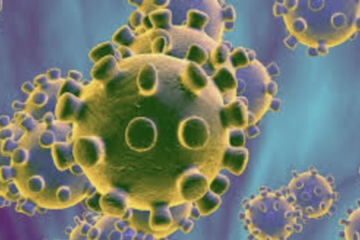Feed
-
Plant breedingPlant breeding Plant breeding has been used for thousands of years, and began with the domestication of wild plants into uniform and predictable agricultural cultigens. High-yielding varieties have been particularly important in agriculture. Selective plant breeding is also used in research to produce transgenic animals that breed "true" (i.e., are homozygous) for artificially inserted or deleted genes.[1By: AmeliyaWednesday, May 12, 2021AGRI-FOOD SYSTEMS+5

-
Agri and food ScholarSelective breeding (also called artificial selection) is the process by which humans use animal breeding and plant breeding to selectively develop particular phenotypic traits (characteristics) by choosing which typically animal or plant males and females will sexually reproduce and have offspring together. Domesticated animals are known as breeds, normally bred by a professional breeder, while domesticated plants are known as varieties, cultigens, cultivars, or breeds.[1] Two purebred animals of different breeds produce a crossbreed, and crossbred plants are called hybrids. Flowers, vegetables and fruit-trees may be bred by amateurs and commercial or non-commercial professionals: major crops are usually the provenance of the professionals.By: AmeliyaWednesday, May 12, 2021HEALTH AND NUTRITION+2

-
Natureisotope labeling agents Agriculture is the science and art of cultivating plants and livestock.[1] Agriculture was the key development in the rise of sedentary human civilization, whereby farming of domesticated species created food surpluses that enabled people to live in cities. The history of agriculture began thousands of years ago. After gathering wild grains beginning at least 105,000 years ago, nascent farmers began to plant them around 11,500 years ago. Pigs, sheep and cattle were domesticated over 10,000 years ago. Plants were independently cultivated in at least 11 regions of the world. Industrial agriculture based on large-scale monoculture in the twentieth century came to dominate agricultural output, though about 2 billion people still depended on subsistence agriculture into the twenty-first.By: AmeliyaWednesday, May 12, 2021CULTURE AND SOCIETY+2

-
isotope labeling agentsPermanently positively charged stable isotope labeling agents and its application in the accurate quantitation of alkylphenols migrated from plastics to edible oils Chong Ma, Shijuan Zhang *, Xia Wu, Jinmao You ** Shandong Province Key Laboratory of Life - Organic Analysis, key Laboratory of Pharmaceutical Intermediates and Analysis of Natural Medicine, Qufu Normal University, Qufu , PR ChinaBy: AmeliyaWednesday, May 12, 2021CULTURE AND SOCIETY+2

-
Permanently positively charged stable isotope labelingPermanently positively charged stable isotope labeling Permanently positively charged stable isotope labeling agents and its application in the accurate quantitation of alkylphenols migrated from plastics to edible oils Chong Ma, Shijuan Zhang *, Xia Wu, Jinmao You ** Shandong Province Key Laboratory of Life - Organic Analysis, key Laboratory of Pharmaceutical Intermediates and Analysis of Natural Medicine, Qufu Normal University, Qufu , PR ChinaBy: AmeliyaWednesday, May 12, 2021CULTURE AND SOCIETY+3

-
venture capital :A new permanently positively charged stable isotope labeling (SIL) agent pair, 4-(((2,5-dioxopyrrolidin-1-yl)oxy)carbonyl)-N,N,N-trimethylbenzenaminium iodide(DPTBA) and its deuterated counterpart d3-DPTBA,By: AmeliyaWednesday, May 12, 2021AGRI-FOOD SYSTEMS+6
-
venture capital :A new permanently positively charged stable isotope labeling (SIL) agent pair, 4-(((2,5-dioxopyrrolidin-1-yl)oxy)carbonyl)-N,N,N-trimethylbenzenaminium iodide(DPTBA) and its deuterated counterpart d3-DPTBA,By: AmeliyaWednesday, May 12, 2021AGRI-FOOD SYSTEMS+5

Leave a comment